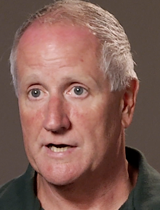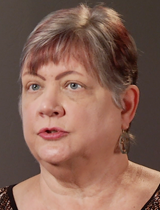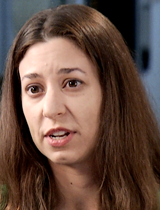Hardship has a new face in Arizona: the economy has pushed many middle-class residents, and others living in suburban areas to the brink, say officials of social service agencies.
 Jim Corcoran, Tucson.
Jim Corcoran, Tucson.Poverty's expansion in suburban Phoenix and Tucson has outpaced its growth in the core cities, exposing the economy's impact on the middle class, a new study shows.
In suburban Phoenix, the number of people living at or below the federal poverty line rose 134.2 percent from 2000 to 2011, compared with 67.9 percent growth of poor in the city itself, the Brookings Institution reported in a study called "Confronting Suburban Poverty in America."
In suburban Tucson, the number in poverty rose 83.8 percent in that 11-year period, compared with 55.5 percent in the city, the study said.
Those increases are similar to the national trend for major metropolitan areas, with the number in poverty up 64 percent in suburban areas and up 29 percent in cities, Brookings reported.
Friday's Arizona Week broadcast explored the issue of suburban poverty as part of Arizona Public Media's week-long series on poverty.
In Arizona, the trend is showing up in the waiting rooms and lines at suburban social service agencies, where people come to look for help finding jobs, paying rent or mortgages, keeping their utilities on and even for food boxes.
 Terri Patt-Smith, associate director, Interfaith Community Services, Tucson.
Terri Patt-Smith, associate director, Interfaith Community Services, Tucson."I was on public assistance," Tucsonan Jim Corcoran told Arizona Week. "I was on AHCCCS and food stamps. I'm not embarrassed to say that. That's a reality."
Corcoran, who is in his late 50s, is educated and experienced as a sports and recreation specialist, but found himself out of work for two and a half years. Only recently did he regain his footing by finding a job with the Pima County Parks and Recreation Department.
He said he had to learn to accept help, and he credited family, friends and staff members at Interfaith Community Services on Tucson's suburban northwest side for helping him.
"One thing that I've learned, another piece that I've learned in my life, is I do need to accept help from others, and not think I've got to do this on my own," Corcoran said. "A team approach in allowing others to help allows for that energy to stay positive and focused where it needs to be."
 Sam Sumner, director of the Community Action Program, Tempe Community Action Agency.
Sam Sumner, director of the Community Action Program, Tempe Community Action Agency.Someone of his background and experience is becoming the typical client at Interfaith, said Associate Director Terri Patt-Smith. She said her agency served 2,000 people in the 2007 fiscal year, and more than 4,000 in the 12 months that ended on June 30, with much of the increase coming among those who had never before asked for help.
"The growth has been in what we call situational poverty," Patt-Smith said. "Something has happened. In this case, one of the major things that happened is the economy: people losing jobs, health care costs, child care costs, affordable housing. All these issues are really making the middle class edge themselves down closer and closer to that...poverty level."
Sam Sumner, director of the Community Action Program at the Tempe Community Action Agency, said he has seen an increase in people needing help with food, medicine for themselves and their children, rent and other basics, with a wrinkle brought on by the aging populace.
"We've seen an uptick in services for Meals on Wheels, and it's consistently with people coming in for services as we learn to reach out to a new baby boomer generation that is not normally known to reach out for senior services," Sumner said. "We are trying our best to reach out to them."
 Andrea Whitsett, manager of Arizona Indicators.
Andrea Whitsett, manager of Arizona Indicators.Many people are living without wiggle room for extras, he said.
"One of the worst things that could possibly happen is if you get sick," Sumner said. "It's those smaller things...a lot of people...wouldn't think anything of it. But, when you're living on the edge, one small hiccup, especially health care, can cause a fragile budget to become disastrous."
Statistics bear that out, said Andrea Whitsett, manager of Arizona Indicators, a centralized data resource program operated by the Morrison Institute for Public Policy at Arizona State University. The statistics she keeps and analyzes tell the story.
"Forty-five percent of Arizonans lack three months' savings to cover their basic living expenses," Whitsett said. "So those are people who might be one crisis away from falling into poverty."
Children are especially vulnerable, she said. Arizona's poverty rate is 19 percent, meaning about 1.2 million of the state's residents are living below the federal poverty line. Among children, the rate is 25 percent, Whitsett said, and that includes 500,000 children who are "food insecure, meaning they don't know where their next meal is coming from."
This story is part of Arizona Public Media's week-long series on poverty.

By submitting your comments, you hereby give AZPM the right to post your comments and potentially use them in any other form of media operated by this institution.